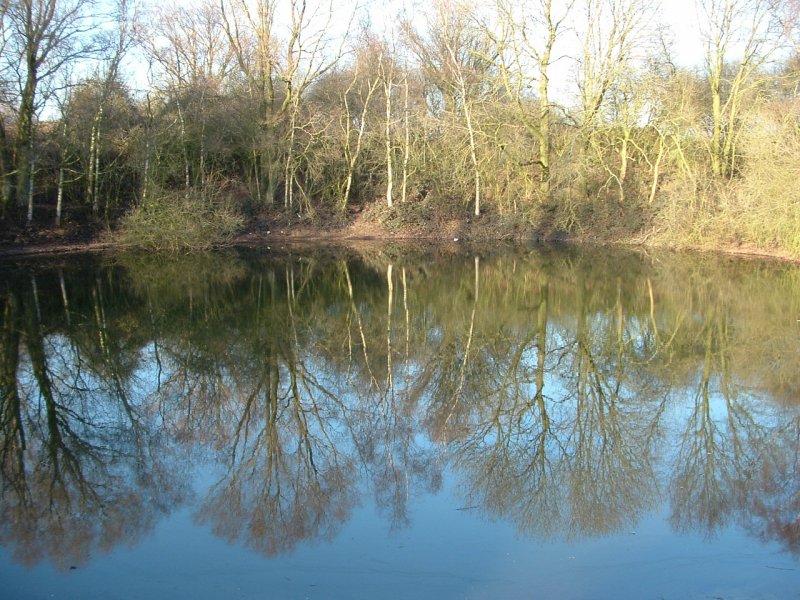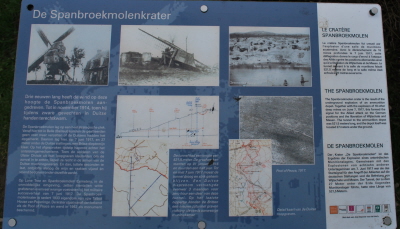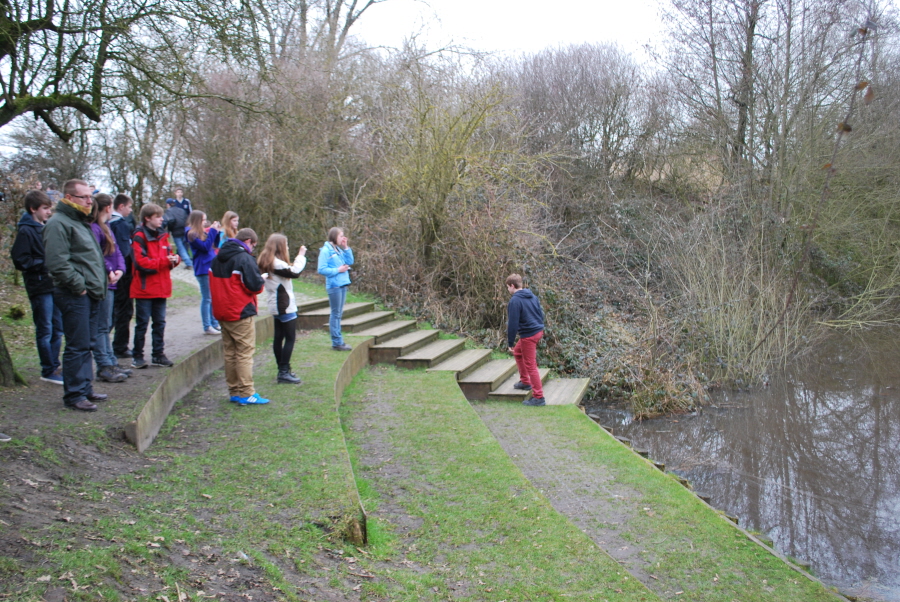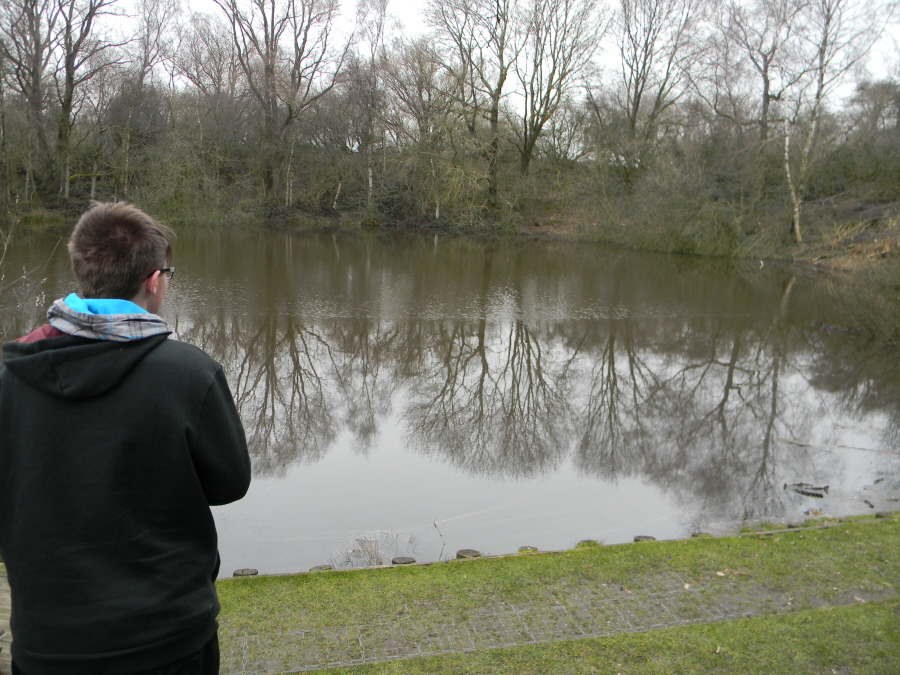
Whitby High School
Battlefields Tour 22nd-25th March 2013

 |
Whitby High SchoolBattlefields Tour 22nd-25th March 2013 |
 |
Spanbroekmolen

The photographs show the flooded crater.
Just before the Battle of Messines (7th-14th June 1917)was due to commence, German artillery fire destroyed the passage to the charge causing considerable doubt as to whether or not the mine could be blown. Working frantically day and night the miners dug a second gallery, only completing the work a day before the British attack was due to begin. Nevertheless, there was still a doubt that the charge could be exploded and the infantry of the 36th (Ulster) Division were told not to wait if the mine failed to explode. The mine exploded 15 seconds late but although the force of the explosion flung some men to the ground, as they traversed No Man's Land there were no casualties.
The Germans had suspected that the British were mining in this area and had actually raided the trenches without discovering the mine shaft. The Royal Engineers sign "Deep Well – Keep Out" apparently sufficed to keep the existence of the mine a secret.
 (click to enlarge display board) From Hill 62 we carried on our journey across the Ypres Salient to Spanbroekmolen. This was the largest of the mines which were blown at the start of the assault on Messines Ridge. Work on it commenced on 1 January 1916, and the mine was effectively completed by the 171 Tunnelling Company R.E. on 26 June 1916. The long-term plans meant that it was not actually detonated until nearly a year later. Before it was blown, the mine was 88 feet deep, containing 91,000 lbs of ammonal. Once it was blown at 3.10 a.m on 7th June 1917, it left a crater 250 feet wide (with a 90 feet wide rim), and 40 feet deep. The crater was purchased in 1929 by Toc H and has thus been preserved. It was renamed "The Pool of Peace".
(click to enlarge display board) From Hill 62 we carried on our journey across the Ypres Salient to Spanbroekmolen. This was the largest of the mines which were blown at the start of the assault on Messines Ridge. Work on it commenced on 1 January 1916, and the mine was effectively completed by the 171 Tunnelling Company R.E. on 26 June 1916. The long-term plans meant that it was not actually detonated until nearly a year later. Before it was blown, the mine was 88 feet deep, containing 91,000 lbs of ammonal. Once it was blown at 3.10 a.m on 7th June 1917, it left a crater 250 feet wide (with a 90 feet wide rim), and 40 feet deep. The crater was purchased in 1929 by Toc H and has thus been preserved. It was renamed "The Pool of Peace".

